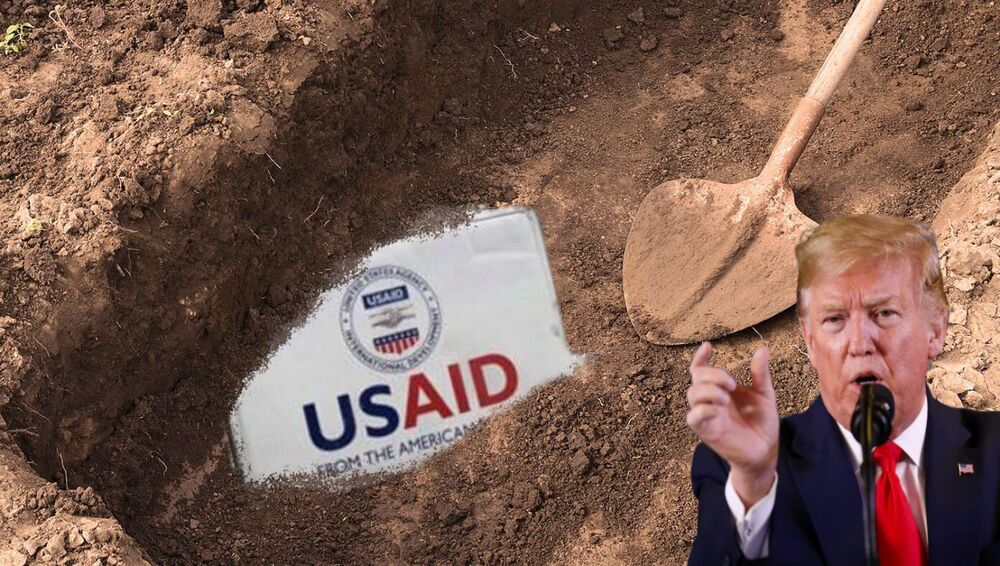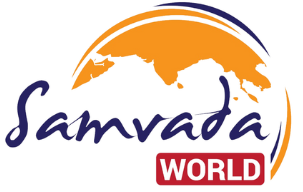
- While several politicians and activists have strongly opposed the move to shut USAID, arguing that it would weaken U.S. influence in global affairs, others viewed it as a necessary step to curb the misuse of American taxpayer money.
- A leaked internal report from USAID exposed that the agency had produced a “Disinformation Primer,” which appeared to be a strategic playbook for shaping public opinion and undermining governments, including in India.
- Reports suggest that organizations funded by USAID in Pakistan and Afghanistan were related to militant groups and the funds from USAID were channelled towards extremist-affiliated charities
For decades, the United States Agency for International Development (USAID) has been referred to as America’s spearhead for providing aid to developing countries. On paper, its mission sounds noble: humanitarian relief, the support of democracy, and promoting economic progress. But beneath this veneer lies a history of political interference, suspicious funding, and even ties with extremist organizations.
U.S. President Donald Trump’s intention to shut USAID was not purely a bureaucratic one but rather a response to deep-rooted concerns associated with its operational activities. USAID has recently been criticized in the media for mismanaging funds, secret involvement in foreign politics and wasteful expenditures.
Trump’s Decision to Shut Down USAID
Trump’s decision to shut down USAID shocked the global aid community. Thousands of employees were let go, and major funding programs were halted without warning. He justified the move stating USAIS’s rampant inefficiency, corruption, and failure to advance U.S. interests in a meaningful way. While some politicians and activists strongly opposed this move, arguing that it would weaken U.S. influence in global affairs, others viewed it as a necessary step to curb the misuse of American taxpayer money. The question that emerged was simple: Was USAID truly helping nations in need, or was it being used as a tool for hidden agendas?
USAID’s Dark Legacy: Questionable Investments and Extremist Links
1. Funding Organizations with Terrorist Ties
This is probably one of the shocking things in USAID’s history relating to funding organizations affiliated with terrorism. In South Asia, USAID provided funding to organizations that were later linked to extremist networks. Some of the money was allegedly used to finance organizations associated with groups such as Lashkar-e-Taiba, which carried out major terror attacks in the region. In Syria, a case came out wherein $9 million in USAID funds were channelled to an al-Qaida-affiliated group, raising serious questions about how aid money was being monitored and distributed.
This has been an issue for years with concerns about the USAID vetting process, but the agency usually brushed it off as a miscalculation or isolated incident. Still, the so-called “mistakes” continued to pile up, igniting doubts about whether USAID genuinely did not know, or was playing dumb.
2. Meddling in Politics and Whittling of Media Freedoms
USAID has been constantly accused of interfering in the internal affairs of sovereign nations, particularly through media influence and funding opposition groups.
In India, USAID faced criticism over accusations that it funded media networks and NGOs that amplified anti-government narratives. A leaked internal report exposed that the agency had produced a “Disinformation Primer,” which appeared to be a strategic playbook for shaping public opinion and undermining governments. The document highlighted the contribution of Rana Ayyub who was shown as the victim of disinformation in India, the document also shows that the State Department of the USA was in an unholy nexus with USAID to hire fact checkers in India.
The agency has been involved in similar tactics across Asia, Latin America, and the Middle East, often under the pretext of “promoting democracy.” However, critics argue that these efforts were less about democracy and more about aligning governments with U.S. interests. Such backdoor involvement in shaping political discourse has led to resentment against USAID in many countries, with leaders questioning whether the agency was truly there to help or to manipulate national policies from behind the scenes.
Wasteful Spending and Unethical Social Engineering
Beyond politics, USAID has often been criticized for misallocating funds—much of which, in fact, went to projects that seemed to prioritize ideology over actual development needs.
Millions were spent by the agency on programs aimed at helping locals that nobody wanted or needed in their respective areas, like LGBTQI+ advocacy in profoundly conservative nations. The programs that matched U.S. domestic policy in the receiving nations often created problems with local cultural and religious orientations, leading to accusations of cultural interference.
Some USAID-funded projects appeared downright absurd—such as millions spent on pottery classes in Morocco or research at the Wuhan Lab, even though it was well-known that COVID-19 originated there. These and other examples only fueled the perception that USAID was less about development and more about pursuing ideological and geopolitical agendas through the cover of humanitarian assistance.
One of USAID’s Darkest Scandals: Forced Sterilization in Peru
One of the most horrifying chapters in USAID’s history is its role in the forced sterilization of indigenous women in Peru during the 1990s. Almost 300,000 women were sterilized without consent as part of a U.S.-funded population control program. Investigations later found that more USAID funding was directly related to the number of sterilizations performed, thus exposing its deep involvement in human rights violations. This scandal was one of the most egregious abuses of power in the name of “aid”, showing how USAID’s influence could be used for deeply unethical and inhumane practices.
USAID’s Questionable Actions in India and South Asia
1. Maharashtra Power Project: Corporate Greed on Full Display
One of USAID’s most contentious involvements in India was its association with Bechtel, an American engineering firm, to privatize energy in Maharashtra during the 1990s. Promised as a project to modernize India’s power sector, it eventually led to allegations of corruption, human rights violations, and environmental damage.
Protests erupted as Indian citizens felt they were being exploited for corporate gain, further damaging USAID’s credibility in the region. This case reinforced concerns that USAID was not simply offering aid—but was, in some cases, acting as a front for corporate interests.
2. Covert Support for Groups with Radical Affiliations
There are reports that organizations funded by USAID in Pakistan and Afghanistan were somehow indirectly related to militant groups. In one example, the funds intended for educational and humanitarian projects were channelled towards extremist-affiliated charities, which also had some ideological links to terror groups.
Conclusion
USAID’s story is one of contradictions. While it has played a role in providing aid, its history is riddled with questionable dealings, political manipulation, and financial mismanagement. Trump’s decision to shut down the agency was highly controversial, but it forced an important discussion: should U.S. foreign aid be restructured to prevent abuse?
Many believe that the future of American aid should prioritize genuine humanitarian work—free from covert political motives, extremist funding, and ideological impositions. USAID has operated under the banner of development for decades, but reality is much more complex. If nothing else, its troubled history serves as a warning about the dangers of unchecked power, reminding the world that even aid organizations must be held accountable.
References:
- [https://www.washingtontimes.com/news/2025/feb/3/usaid-massive-pool-waste-corruption-shut/?utm_source=chatgpt.com](https://www.washingtontimes.com/news/2025/feb/3/usaid-massive-pool-waste-corruption-shut/
- [https://fee.org/articles/the-us-government-led-a-program-that-forcibly-sterilized-thousands-of-peruvian-women/?utm_source=chatgpt.com](https://fee.org/articles/the-us-government-led-a-program-that-forcibly-sterilized-thousands-of-peruvian-women
- [https://oig.usaid.gov/node/7283?utm_source=chatgpt.com](https://oig.usaid.gov/node/7283?
- [https://www.whitehouse.gov/uncategorized/2025/02/at-usaid-waste-and-abuse-runs-deep/?utm_source=chatgpt.com](https://www.whitehouse.gov/uncategorized/2025/02/at-usaid-waste-and-abuse-runs-deep/
- [https://www.foxnews.com/world/top-usaid-projects-under-elon-musks-microscope?utm_source=chatgpt.com](https://www.foxnews.com/world/top-usaid-projects-under-elon-musks-microscope?
- https://www.opindia.com/2025/02/usaid-disinformation-primer-targeted-india-bjp-promoted-rana-ayyub-details/
- https://www.indiatoday.in/world/story/donald-trump-usaid-funded-pakistan-ngo-link-to-terrorist-organisation-lashkar-e-taiba-let-falahs-e-insaniat-2675197-2025-02-05
Aayush Pal is a freelance writer on contemporary geopolitical developments. The views expressed in his work are entirely his own.
